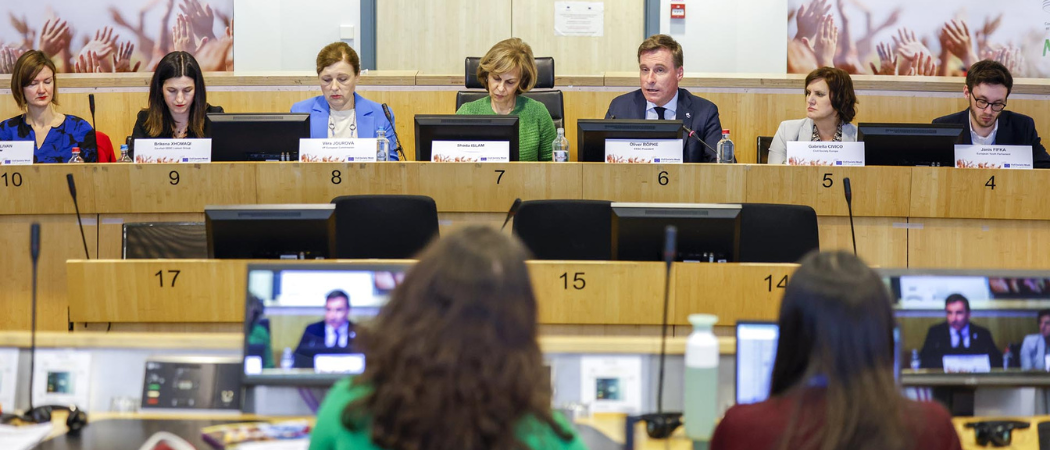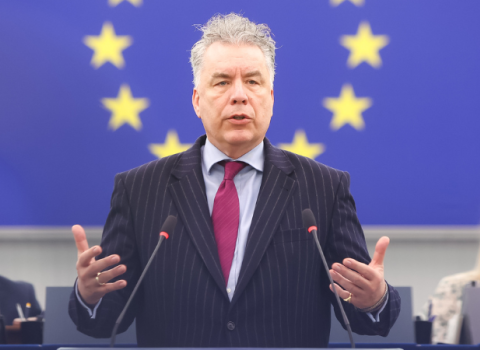Research and innovation investments should not count towards EU deficit rules until targets are met, says European Economic and Social Committee

Photo credits: European Union
The European Economic and Social Committee (EESC) is calling on the EU to introduce a major change to its rules to encourage member states to invest more in R&D: decouple national research and innovation investments from deficit rules until the EU’s 3% of GDP target is met.
The recommendation features in the EESC’s opinion on the upcoming European Research Area (ERA) Act, adopted on July 16. The EESC is an EU advisory body representing employers, workers and civil society organisations. It adopted the opinion on its own initiative, not as part of a mandatory consultation.
The ERA was launched in 2000 with the aim of creating a single market for research and innovation, and EU member states officially endorsed the 3% target two years later. But fast forward more than two decades and R&D spending averages around 2.2% of GDP, while significant barriers remain to the free circulation of researchers and knowledge.
The Commission is due to present a proposal for the ERA Act in the second half of 2026. The aim is to introduce legal instruments to address barriers to achieving the ERA goals that cannot be solved with voluntary collaboration. The goal is to bring R&D investment to 3%, reinforce alignment between EU and member-state funding, and foster the circulation of knowledge and talent across Europe.
Reforming deficit rules could incentivise spending, which will ultimately provide a return on investment, including in EU member states with low innovation performance, which often have higher than average deficits. “Investment in research and innovation would create new and better taxation,” said Paul Rübig, the former Austrian MEP who authored the EESC opinion.
Belgian economist Luc Soete proposed a similar solution in an interview with Science|Business last year, when member states were considering raising the target to 4%. He suggested that research and innovation spending should be considered a long-term expenditure and excluded from short-term deficit calculations.
The EESC paper also says that instruments designed to reverse the brain drain and attract researchers and start-ups to Europe, particularly in the context of US funding cuts, should also be decoupled from deficit rules. This includes fast-track visas and time-limited tax breaks for incoming talent, for example.
On top of the 3% target, the EESC is urging member states to commit to an additional 1% for preparedness and dual-use research.
Otherwise, the EESC wants the ERA Act to focus on regulatory measures and incentives in areas “where member state reluctance hampers progress,” such as tax, salaries and gender.
Cohesion instruments
The EESC opinion recognises that the goal of the ERA Act to cement research, innovation and knowledge as the “fifth freedom” of the single market will entail a number of trade-offs: between intellectual property and open science, speed and ethical oversight, or cohesion and excellence.
“Removing barriers to mobility holds great potential but may widen disparities,” it says. To achieve an acceptable balance, it recommends supporting smart specialisation strategies and institutions in regions with lower research and innovation capacities.
It also calls for better alignment of cohesion funds with research and innovation activities, for instance expanding transfers from the European Regional Development Fund to Horizon Europe, which allows countries with low participation in Horizon to improve their success rates. More regional funding should also go towards research infrastructures, Rübig told Science|Business.
Related articles
- EIT is key to completing the European Research Area, says Economic and Social Committee rapporteur
- Commission to launch public consultation on ERA Act
- Commission urges member states to boost R&D investments
Finally, it also recommends including mechanisms to counter disinformation and pseudoscience, and to build trust in scientific institutions, as part of efforts to deliver the fifth freedom.
Underpinning all of these efforts should be a well-funded Framework Programme, referred to as the “backbone” of the fifth freedom. FP10 should give a key role to applied and collaborative research so that results are translated into economic and social impact, while innovation funding must become faster and more flexible, the EESC says.
“Two principles we should never forget are the added value of the European Union [. . .] and the cost of non-Europe. How high are the costs for all of us if every member state is working [separately] on the same [kinds of] programme?” Rübig said.





 A unique international forum for public research organisations and companies to connect their external engagement with strategic interests around their R&D system.
A unique international forum for public research organisations and companies to connect their external engagement with strategic interests around their R&D system.